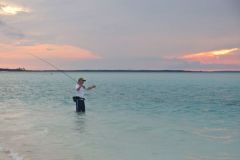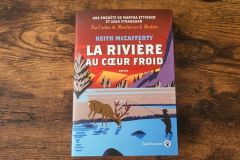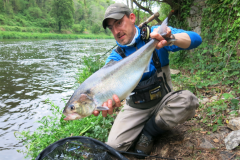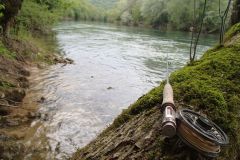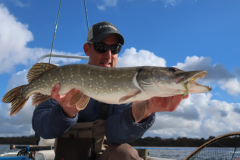Equipment for fly fishing for perch
The average size of perch caught on a fly is around 25 cm, but it is possible to catch some very nice fish. Consequently, you'll need rather light tackle to have a little more fun.
Of course, if your fishing area requires deeper fishing (large lake) or larger/voluminous flies because you have larger subjects, you can adapt.
As a general rule, a 9-foot, 6-gauge rod fitted with a floating line is best suited to fishing close to the surface or jigging.
If you need to go deeper, then you'll need an intermediate, plunging line, but it really depends on the depth of the spots. This is often the case on a boat, where you'll tend to fish a little deeper, although surface shots can be a surprise!
In large lakes, shoals of perch can be substantial and a sinking to very sinking line allows you to quickly reach the right depths and sometimes avoid the smaller fish to find the larger ones which are usually below.
A point between 20 and 27° is perfectly suitable. It is sometimes necessary to use a steel or titanium rod when there are many pikes on the same spots. This avoids losing all your streamers!

Power fishing
Whether you're fishing a river or a lake, the first thing to do is to locate small shoals by power fishing. The depth sounder can be of great help in locating these shoals, but they will generally become increasingly compact as temperatures drop. These are gregarious fish, although the larger specimens are often quite solitary and therefore harder to find.
In fact, they're often caught when looking for pike with much larger flies than those we usually dedicate to perch. And they don't seem to mind big wires! So, sometimes you just have to go for it.
Streamer fishing using imitations of small white fish, but also perch of the year are very effective. You'll need to find out whether they want gloss or more natural colors, as well as the size of the prey they're attached to. This can depend on their mood, but also on the light and food available. Food competition on large shoals means they are less selective.
As for animations, they are often quite fast. For me, stop and go is one of the key animations. Leaded and waddled rigs are very appealing to perch, which respond well to these jerky animations.

Find spots that can change from one day to the next
Perch like structures, whether dead wood, riprap, bridge piers, and all clean breaks, but also water inlets, especially when forage fish come there to look for their food or seek warmer/cooler water.
It's important to keep a close eye on the surface of the water, as this will help you find where the whitefish are stirring and feeding. Carnivores are rarely far from their larder.
At this time of year, perch are often on the small fry that can be found just about anywhere. They come to hunt them in little water where the sun warms the water temperature by a few degrees. The small perch of the year also pay a high price, as perch, like many carnivores, do not hesitate to strike at their offspring!

On the surface too!
Small surface flies are of great interest to perch. You can use small poppers and gurglers designed for black bass or mounted specifically for perch. In this case, allow for several sizes depending on the food present and the size of the perch in your fishing area. Generally speaking, you need 3 to 5 cm maximum.
Shallower water edges are always interesting spots, but sometimes it's in open water, on a shoal or where a gathering of forage fish is taking place.

There's nothing more beautiful and exciting than having action on the surface, whatever the fish. Perch have big mouths and their aspirations on poppers and gurglers provide great thrills!


